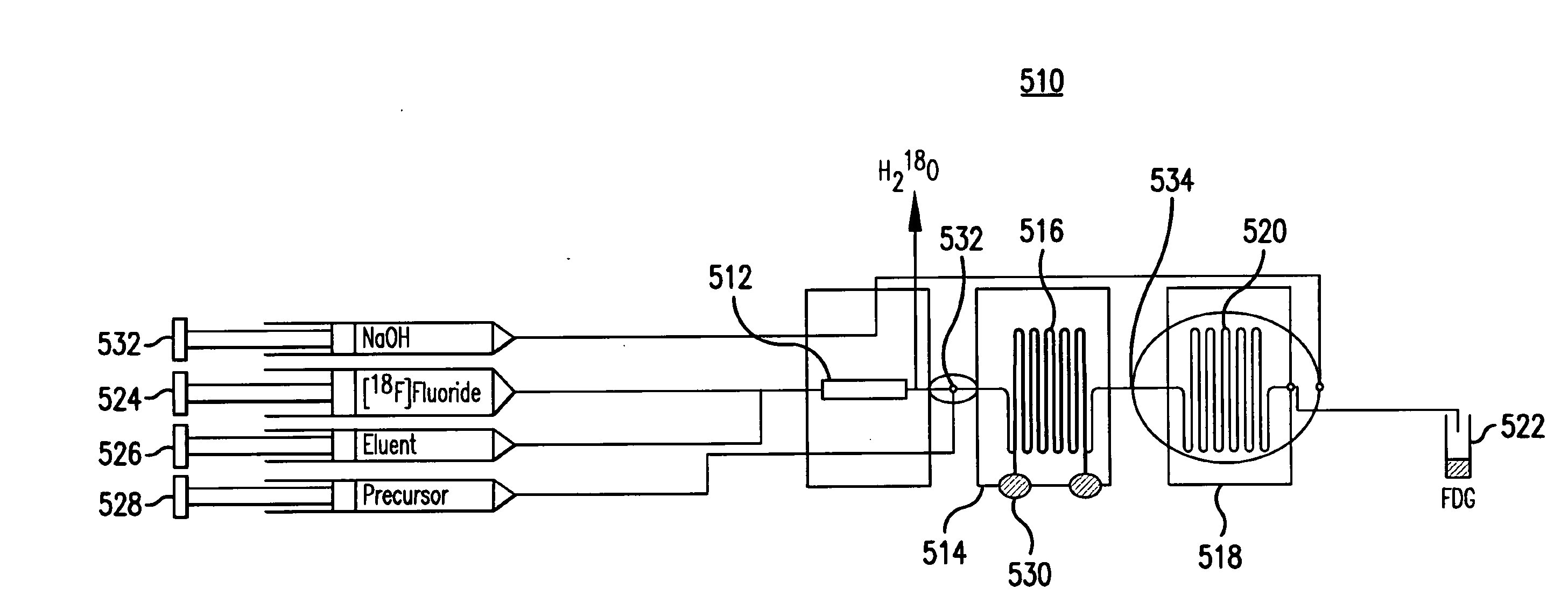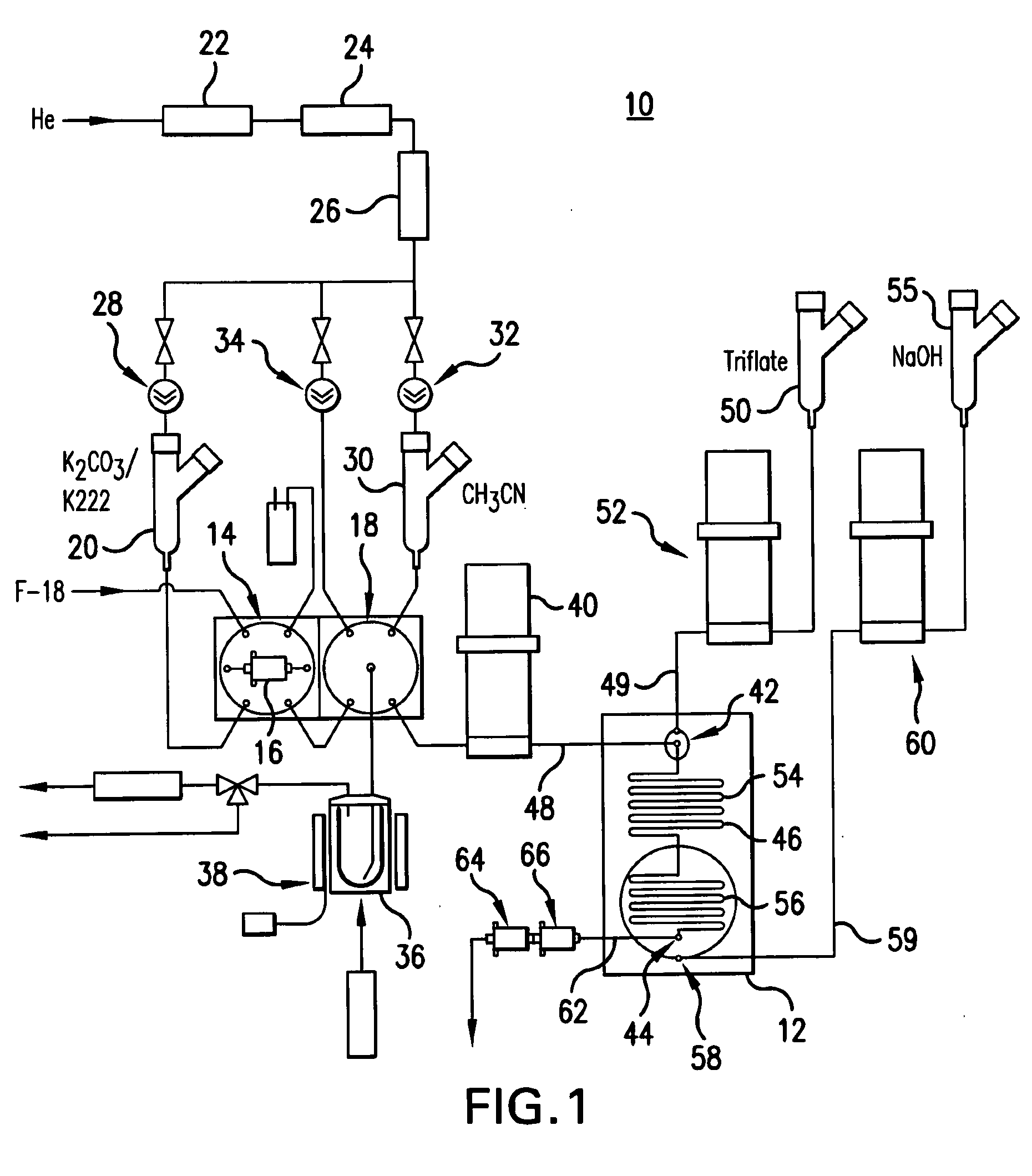Nucleophilic radiofluorination using microfabricated devices
a microfabricated device and radiotracer technology, applied in feed devices, liquid-gas reaction processes, inorganic chemistry, etc., can solve the problems of difficulty in filling beads into the microstructures of chips, need for additional drying steps, and method is too complex for economical implementation on a microstructur
- Summary
- Abstract
- Description
- Claims
- Application Information
AI Technical Summary
Benefits of technology
Problems solved by technology
Method used
Image
Examples
experiment 1
Resin Volume Required for Efficient Fluoride Trapping
[0088]In order to investigate the use of small quantities of solid phase resin for the extraction of 18F-fluoride, the devices described herein were fabricated as described and filled with between 1 and 25 μL of the resin. From FIG. 10 (Trapping Efficiency) graph it can be seen that although good trapping efficiency can be achieved with very small quantities of beads, the trapping efficiency exhibits a large degree of variability. The results of FIG. 10 are averages of 35 experiments; however some outliers have been removed for clarity. Efficient 18F-fluoride trapping of 1 mL irradiated 18O-water requires a minimum resin volume of 5 μL. It has been found that 10 μL of resin is sufficient to trap Fluoride from 1 mL of irradiated 18O-water.
Fluoride Elution from Small Resin Volumes
[0089]Subsequently, as shown in FIG. 11, it was determined that a water content of 11% is sufficient to elute 18F efficiently from 10 μL of resin.
Suitabili...
experiment 2
[0092]This experiment investigated the integration of the full synthesis process on a single chip.
Test of the Elution Method with Microfluidic Synthesis
[0093]First FDG microsynthesis experiments utilize a Nanopak and a commercial glass mixer chip 410 for labeling (Africa micro reactor, Syrris Ltd., Hertfordshire, U.K.). The geometry of chip 410 is shown in FIG. 12. Chip 410 is formed by joining a first and second elongate planar glass bodies together as previously described, which define an elongate microchannel 412 therebetween. FIG. 12 provides specific dimension criteria for chip 410. Chip 410 provides a first input port 414, a second input port 416, and an output port 418 at the opposite end of channel 412 from input ports 414 and 416. Input ports 414 and 416 are in fluid communication with a mixing junction 420 via segments 422 and 424, respectively. Microchannel 412 includes a first serpentine mixing segment 426 and a second serpentine reaction segment 428 extending serially b...
PUM
| Property | Measurement | Unit |
|---|---|---|
| bead size | aaaaa | aaaaa |
| volume | aaaaa | aaaaa |
| density | aaaaa | aaaaa |
Abstract
Description
Claims
Application Information
 Login to View More
Login to View More - R&D
- Intellectual Property
- Life Sciences
- Materials
- Tech Scout
- Unparalleled Data Quality
- Higher Quality Content
- 60% Fewer Hallucinations
Browse by: Latest US Patents, China's latest patents, Technical Efficacy Thesaurus, Application Domain, Technology Topic, Popular Technical Reports.
© 2025 PatSnap. All rights reserved.Legal|Privacy policy|Modern Slavery Act Transparency Statement|Sitemap|About US| Contact US: help@patsnap.com



